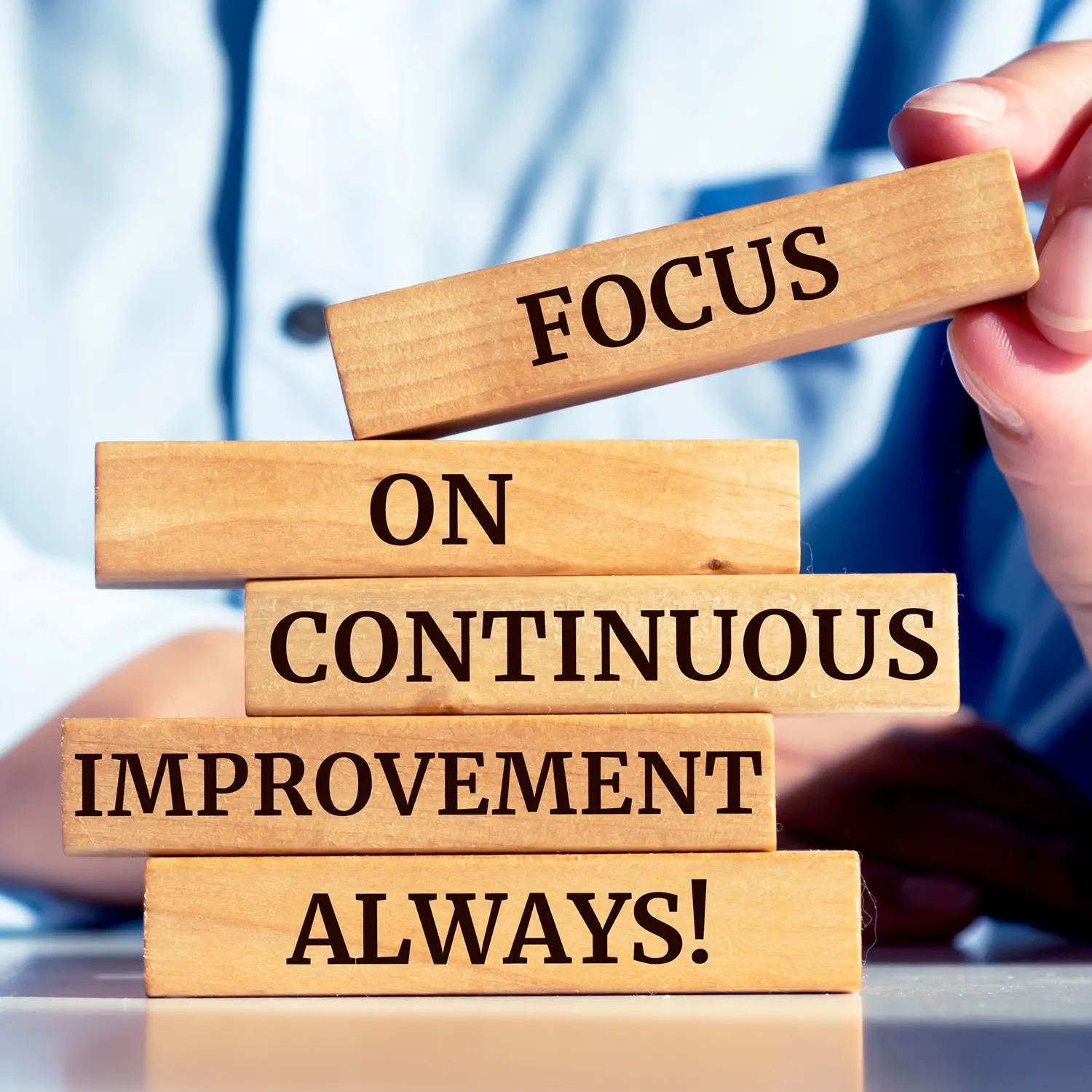The Growth Trajectory of a Business
The Growth Trajectory of a Business
Every business encounters growth uniquely; however, there are similarities between organization journeys, marked by distinct stages, each with its own challenges and opportunities. The key to successfully navigating this growth trajectory lies in understanding the four imperatives as well as the common growth stages of a business to implementing strategic planning to address each phase's operational complexities and potential hurdles.
Startup Phase: Initially, startups grapple with establishing their presence in the market, attracting customers, and securing essential funding. During this nascent period, the emphasis is on maintaining operational agility, optimizing resources, and achieving the right product-market fit. Strategic planning is geared towards market entry, with a focus on resource optimization and agile response to market feedback.
Growth Phase: As a business gains traction, the challenges evolve. Now, the focus shifts to managing increased demand, scaling operations effectively, and preserving the core values that define the brand. Strategic planning in this phase is critical for ensuring balanced growth, emphasizing scalability and efficient resource allocation, all while maintaining the quality and essence of the brand.
Maturity and Expansion: Reaching a stage of maturity and expansion, a business encounters different challenges, such as managing a larger workforce, streamlining processes, and staying relevant in a dynamic and ever-evolving market. Strategic decision-making during this phase is pivotal for sustaining competitiveness and exploring new avenues for growth. This involves diversification strategies, adapting to changing market dynamics and optimizing existing processes for efficiency.
Enterprise Level: Achieving the enterprise level introduces a new set of complexities. Here, the focus is on sustaining innovation within a more complex organizational structure and ensuring continued profitability. Strategic planning at this stage shifts towards long-term sustainability, with a keen eye on market trends and adaptability to ensure continued relevance and competitiveness.
Strategic planning acts as the linchpin throughout these stages, guiding businesses through their growth. It involves setting clear objectives, anticipating potential challenges for each stage, and devising a path for sustainable expansion. By aligning strategies with the challenges of each stage, businesses are better equipped to overcome obstacles and thrive. Strategic planning enables companies to evolve with purpose and resilience, ensuring that they not only grow but also adapt and flourish in an ever-changing business landscape.

Job Role Evolution and Delegation
Job Role Evolution and Delegation
The Pitfalls of Major Reorganizations
The Pitfalls of Major Reorganizations
As you scale your company, onboard new talent, and reshuffle the job roles, there are some significant pitfalls you need to be aware of. Major reorganizations in growing businesses can introduce risks and disadvantages that, if not carefully managed, may impede the anticipated benefits of the restructuring. Here are some common risks and disadvantages:
Workflow Disruption: The restructuring process can disrupt established workflows, leading to a temporary decline in productivity as employees adapt to new roles and processes. Reduced workflow efficiency during the transition period may impact the delivery of products or services, affecting customer satisfaction and potentially harming the business's reputation.
Employee Morale and Resistance: Employees may experience uncertainty, anxiety, and resistance to change during significant reorganizations. Concerns about job security, role changes, or unfamiliar reporting structures can lower morale. Decreased employee morale can lead to reduced motivation, increased turnover, and challenges in retaining top talent, ultimately hindering the organization's growth.
Communication Breakdown: Inadequate communication about the reasons behind the reorganization, the expected changes, and the impact on employees can lead to confusion and misunderstandings. Also, better communication may result in misinformation, rumors, and a lack of trust among employees, creating a positive work environment and hindering collaboration.
Loss of Institutional Knowledge: Reorganizations often involve personnel changes, which may result in the loss of institutional knowledge as experienced employees leave or assume new roles. Losing institutional knowledge can impact decision-making processes, hinder problem-solving, and slow the transfer of critical information within the organization.
Instead of resorting to significant restructurings, businesses can explore alternative strategies to adapt to changing needs and foster growth. One approach is to implement incremental adjustments over time rather than sweeping changes. As a result, this allows for a more gradual transition, allowing employees to acclimate to evolving structures without causing undue workflow disruption.
Additionally, including employees in decision-making fosters a sense of ownership to reduce resistance to change. Clear and consistent communication throughout any organizational changes is paramount to mitigate uncertainty and maintain trust among the workforce. Investing in professional development programs is another alternative, ensuring employees have the necessary skills for evolving roles and contributing to higher job satisfaction. Setting up ongoing feedback systems helps the organization understand how adjustments impact employees.

Leveraging Team Insights for Role Division
Leveraging Team Insights for Role Division
Hiring the Right Talent
Hiring the Right Talent
Best Practices in Recruitment and Talent Acquisition for Growing Businesses:
Implementing effective recruitment and talent acquisition practices is essential for growing businesses aiming to attract top-tier candidates. Implementing best practices supports the success of your workforce, and a thriving workforce sustains the success of your business.
Strategic Workforce Planning: Align recruitment efforts with the organization's long-term goals and anticipated growth. Identify critical roles that will drive success and plan recruitment strategies accordingly.
Comprehensive Job Descriptions: Articulate job responsibilities, qualifications, and expectations in job descriptions. Clear job descriptions ensure that candidates and the hiring team find the perfect match by better understanding the expectations.
Targeted Talent Sourcing: Leverage diverse channels for talent sourcing, including online platforms, professional networks, and industry events. Cast a wide net to attract candidates with varied skill sets and experiences.
Thorough Interview Processes: Conduct comprehensive interviews that assess technical skills, cultural fit, and alignment with growth objectives. Behavioral and situational questions provide insights into a candidate's problem-solving abilities and adaptability. Make sure your hiring managers have a purpose with every question they ask during an interview. Rote interview questions lead to uninspired new hires. Interviews should be challenging and role-specific to ensure you're hiring someone who can excel at the job.
Employee Referral Programs: Encourage existing employees to refer potential candidates. Getting referrals taps into existing networks and enhances the likelihood of finding candidates who align with the company's culture. However, don't lose the benefits of a highly diverse workplace by hiring only from a referral pool, as people tend to associate with individuals similar to themselves more often than those who think differently. A more comprehensive range of viewpoints yields better outcomes in decision-making processes. So, make sure your hiring practices ensure diversity in your workplace.
Competitive Compensation Packages: Offer competitive and fair compensation packages to attract top talent. Consider salary, benefits, professional development opportunities, and work-life balance.
Onboarding and Integration Programs: Develop robust onboarding programs for smooth integration and onboarding of new hires into the company culture. Usually, this includes providing necessary training, mentorship, and resources for a successful transition.
Systematizing Operations for Clarity and Efficiency
Systematizing Operations for Clarity and Efficiency

Continuous Assessment and Role Adaptation
Continuous Assessment and Role Adaptation
Clear Communication Channels: Establish transparent communication channels to inform employees about organizational changes and evolving job expectations. Clear communication minimizes confusion and ensures that everyone is on the same page with the skills that the organization needs to continue.
Regular Skills Assessments: Conduct regular employee skills assessments to identify areas for development and adaptation. A proactive approach guarantees a workforce that is well-equipped for changing demands.
Agile Work Practices: Embrace agile work practices that encourage collaboration, innovation, and quick adjustments to changing circumstances. Empowering employees to decide on changes fosters a culture of continuous improvement and accountability.



